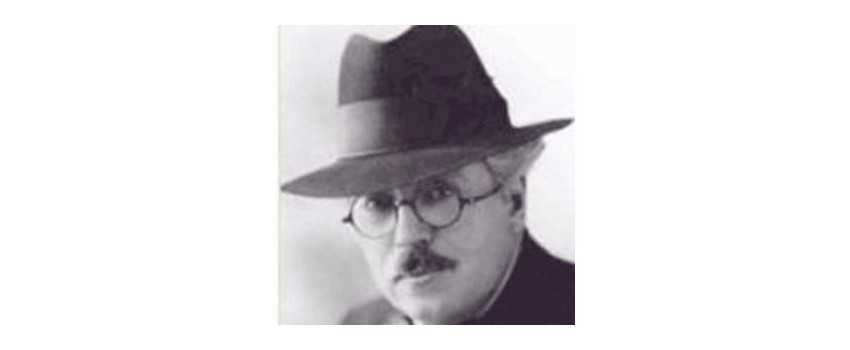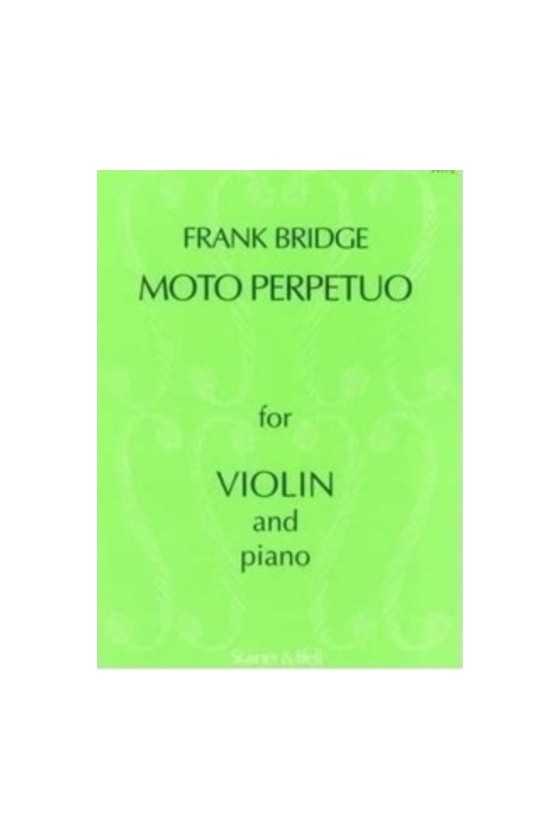-
MenuBack
-
Instruments
-
-
Strings
-
-
Violin Strings
-
Violin Strings A-G
- Alphayue Violin Strings by Thomastik-Infeld
- Amber Violin Strings by Warchal
- Ametyst Violin Strings by Warchal
- Ascente Violin Strings by D'Addario
- Aurora Violin Strings by Larsen
- Brilliant Violin Strings by Warchal
- Brilliant Vintage Violin Strings by Warchal
- Chromcor Violin Strings by Pirastro
- Dominant Violin Strings by Thomastik-Infeld
- Dominant Pro Violin Strings
- Dynamo Violin Strings by Thomastik-Infeld
- Eudoxa Violin Strings by Pirastro
- Evah Pirazzi Violin Strings by Pirastro
- Evah Pirazzi Gold Violin by Pirastro
- Goldbrokat Violin E Strings
-
Violin Strings H-O
- Helicore Violin Strings by D'Addario
- Hill Violin E String by W. E. Hill & Sons
- Infeld Blue Violin Strings
- Infeld Red Violin Strings
- Jargar Violin Strings
- Kaplan Violin Strings by D'Addario
- Karneol Violin Strings by Warchal
- Larsen Violin Strings
- Maestro Violin Strings
- Obligato Violin Strings
- Oliv Violin Strings
- Opal Titan Violin Strings
- Violin Strings P-Q
- Violin Strings R-Z
-
Violin Strings A-G
-
-
-
Viola Strings
- Viola Strings A-O
- Viola Strings P-Z
-
-
-
Cello Strings
-
Cello Strings A-E
- Alphayue Cello Strings
- Aurora Cello Strings by Larsen
- Chorda Cello Strings
- Chromcor Cello Strings
- Clarendon Gold Strings for Cello
- Corelli Cello Strings
- Dominant Cello Strings
- Eudoxa Cello Strings
- Evah Pirazzi Cello Strings
- Helicore Cello Strings
- Jargar Cello Strings
- Kaplan Cello Strings
- Larsen Cello Strings
- Lenzner Cello Strings
- Maestro Cello Strings
- NS Design Electric Cello Strings
- Obligato Cello Strings
- Opal Titan Cello Strings
- Cello Strings H-P
- Cello Strings Q-Z
-
Cello Strings A-E
-
-
-
Double Bass Strings
-
Double Bass Strings
- Belcanto Double Bass Strings
- Dominant Double Bass Strings
- Eudoxa Double Bass Strings
- Evah Pirazzi Double Bass Strings
- Helicore Double Bass Strings
- Kaplan Double Bass Strings
- Maestro Double Bass Strings
- NS Electric Double Bass Strings
- Obligato Double Bass Strings
- Perpetual Double Bass Strings by Pirastro
- Precision Double Bass Strings
- Prelude Double Bass Strings
- Spirocore Double Bass Strings
- Superflexible Bass Strings
-
Double Bass Strings
-
-
-
Bows
-
-
Cases
-
-
Accessories
-
-
Learn - All Grades
-
-
-
-
-
Beginner Methods A-N
- Abracadabra
- Adventures in Violinland
- The ABC's books
- All for Strings
- Artistry in Strings
- A Tune A Day
- Blackwell Books
- Colour Strings Books
- Edward Huws Jones
- Encore On Strings
- Essential Elements
- Flying Start for Strings
- L Fin Beginning Ensemble Series
- Katherine and Hugh Colledge
- Mary Cohen Books
- My First Pieces & My Next Pieces
- Nelson Books
- New Directions for Strings
-
-
-
-
Perform
-
-
Violin Sheet Music
-
Composers Violin A-C
- Accolay, Jean Baptiste
- Achron, Joseph Yulyevich
- Albinoni, Tomaso
- Arne, Thomas Augustine
- Bach, Johann Sebastian
- Beethoven, Ludwig van
- Bloch, Ernest
- Beriot, Charles Auguste De
- Brahms, Johannes
- Bridge, Frank
- Bruch, Max
- Carse, Adam
- Campagnoli, Bartolomeo
- Cerulli, Bob
- Chausson, Ernest
- Chopin, Frédéric François
- Copland, Aaron
- Corelli, Arcangelo
- Corigliano, John
-
Composers Violin D-G
- Dancla, Charles
- Debussy, Claude
- Delius, Frederick
- De Falla, Manuel
- Dinicu, Grigoraș Ionică
- Doflein, Elma
- Drdla, Franz
- Dvorak, Antonin
- Eccles, Henri
- Edwards, Ross
- Elgar, Edward
- Faure, Gabriel
- Finzi, Gerald
- Fiocco, Joseph Hector
- Franck, César-Auguste
- Gade, Jacob
- Guareschi, Giovannino
- Giazotto, Remo
- Górecki, Henryk
- Glazunov, Alexander
- Composers Violin H-K
- Composers Violin L-M
-
Composers Violin N-T
- Perlman, Itzhak
- Paganini, Niccolò
- Power, James
- Prokofiev, Sergei
- Rachmaninoff, Sergei
- Ravel, Maurice
- Rieding, Oskar
- Rimsky-Korsakov, Nikolai
- Rode, Jacques Pierre Joseph
- Saint-Saens, Camille
- Sarasate, Pablo de
- Schumann, Robert
- Schubert, Franz
- Schradieck, Henry
- Seitz, Friedrich
- Shostakovich, Dmitri
- Sibelius, Jean
- Smetana, Bedrich
- Spohr, Louis
- Solos for Young Violinists
- Strauss, Richard
- Stravinsky, Igor
- Suk , Josef
- Szelenyi, Istvan
- Szymanowski, Karol
- Tartini, Giuseppe
- Tchaikovsky, Pyotr Ilyich
- Telemann, Georg Philipp
- Piazzolla, Astor
- Composers Violin U-Z
- Popular Violin Sheet Music
- Other Violin Sheet Music
-
Composers Violin A-C
-
-
-
Viola Sheet Music
-
Composers Viola A-C
- Accolay, Jean-Baptiste
- Anderson, Kenneth
- Bach, Johann Christian
- Bach, Carl Philipp Emanuel
- Bach, Johann Sebastian
- Bartók, Béla
- Bax, Arnold
- Beethoven, Ludwig van
- Bériot, Charles Auguste de
- Biber, Heinrich Ignaz Franz
- Bloch, Ernest
- Boccherini, Luigi
- Böhm, Karlheinz
- Bohm, Theobald
- Bowen, York
- Brahms, Johannes
- Bridge, Frank
- Britten, Benjamin
- Bruch, Max Felix
- Butterworth, Arthur
- Carter, Elliott
- Clarke, Rebecca
- Corelli, Arcangelo
- Corrette, Michel
-
Composers Viola D-G
- Dale, Benjamin
- Dean, Brett
- Debussy, Claude
- Dittersdorf, Carl Ditters von
- Dodgson, Stephen
- Dounis, Demetrius Constantine
- Dvořák, Antonín
- Eccles, Henry
- Elgar, Edward
- Eliot, Norton, Charles
- Enesco, Georges
- Fauré, Gabriel
- Fiocco, Joseph-Hector
- Forbes, Watson
- Franck, Cesar
- Francoeur, François
- Fuchs, Lillian
- Gershwin, George
- Glazunov, Alexander
- Glinka, Mikhail
- Granados, Enrique
-
Composers Viola H-K
- Handel, George Frideric
- Handoshkin, Ivan Evstafeivich
- Haydn, Joseph
- Hindemith, Paul
- Hoffmeister, Franz Anton
- Hovhaness, Alan
- Hubay, Jenő
- Hyde, Miriam Beatrice
- Jacob, Gordon
- Joachim, Joseph
- Jones, Matthew
- Kalliwoda, Johann Wenzel
- Kayser, Heinrich Ernst
- Kreisler, Fritz
- Kreutzer, Rodolphe
- Küchler, Ferdinand
- Jenkinson, Ezra
- Composers Viola L-M
-
Composers Viola N-R
- Pachelbel, Johann
- Nyman, Michael
- Onslow, George
- Paganini, Niccolò
- Pergolesi, Giovanni Battista
- Piatigorsky, Gregor
- Piazzolla, Astor
- Prokofiev, Sergei
- Puccini, Giacomo
- Purcell, Henry
- Rachmaninoff, Sergei
- Ravel, Maurice
- Reger, Max
- Reinecke, Carl
- Richardson, Alan
- Rieding, Oskar
- Rimsky-Korsakov, Nikolai Andreyevich
- Rivier, Jean
- Rode, Jacques Pierre Joseph
- Composers Viola S-T
- Composers Viola U-Z
- Popular Viola Sheet Music
- Other Viola Sheet Music
-
Composers Viola A-C
-
-
-
Cello Sheet Music
-
Composers Cello A-C
- Andriessen, Louis
- Bach, Johann Sebastian
- Bantock, Granville
- Bartók, Béla
- Beethoven, Ludwig van
- Bloch, Ernest
- Boccherini, Luigi
- Boëllmann, Léon
- Brahms, Johannes
- Bréval, Jean-Baptiste
- Bridge, Frank
- Britten, Benjamin
- Bruch, Max
- Caix d'Hervelois, Louis de
- Carse, Adam
- Cassadó, Gaspar
- Cirri, Giovanni Battista
- Clarke, Rebecca
-
Composers Cello D-G
- Dare, Marie
- Davydov, Karl
- Debussy, Claude Achille
- Fesch, Willem de
- Dvorak, Antonin Leopold
- Eccles, Henry
- Elgar, Sir Edward
- Falla, Manuel de
- Faure, Gabriel-Urbain
- Ferguson, Howard
- Feuillard, Louis
- Foss, Lukas
- Franchomme, Auguste
- Francoeur, François
- Gabrieli, Giovanni
- Galliard, Johann Ernst
- Glazunov, Alexander
- Goens, Daniël van
- Goltermann, Georg
- Guymer, Ingrid
- Granados, Enrique
- Gounod, Charles François
- Composers Cello H-K
- Composers Cello L-M
- Composers Cello N-R
-
Composers Cello S-T
- Saint-Saëns, Camille
- Sammartini, Giuseppe
- Sassmannshaus, Kurt
- Schubert, Franz
- Schumann, Robert Alexander
- Sculthorpe, Peter
- Senaillé, Jean Baptiste
- Shostakovich, Dmitri
- Sibelius, Jean
- Squire, William Henry
- Strauss, Richard
- Stravinsky, Igor
- Tartini, Giuseppe
- Tchaikovsky, Pyotr Ilyich
- Telemann, Georg Philipp
- Trowell, Arnold
- Composers Cello U-Z
- Popular Cello Sheet Music
- Other Cello Sheet Music
-
Composers Cello A-C
-
-
-
-
Play Together
-
Bridge, Frank
Frank Bridge, born on February 26, 1879, was not only a renowned English composer but also an accomplished viola performer. His contributions to music, especially in the realm of chamber songs, have solidified his place among the most famous musicians of his time. This article delves into the life and music of Frank Bridge, exploring his evolution as a composer and the impact he made on the musical landscape. From his early romantic compositions to his experimentation with atonality and impressionism, Bridge's journey is one of constant exploration and innovation.
Early Works and Influences
During his studies at the Royal College of Music under the guidance of C.V. Stanford, Frank Bridge began to compose a series of large chamber works that showcased his talent and potential. Influenced by the great composers of the time such as Brahms, Beethoven, Tchaikovsky, Franck, and Faure, Bridge's early works displayed a romantic style. Notable compositions from this period include the Phantasie Quartet (1910), four string quartets, and piano and vocal pieces.
A Shift towards Atonality
As Bridge continued to develop as a composer, he started to explore more modernist tendencies, particularly in the years leading up to the First World War. The Dance Poem of 1913, for example, reflected the influence of Stravinsky and Debussy, showcasing Bridge's willingness to experiment with new musical styles. However, during the war years, his compositions veered towards a more moderate approach, often incorporating pastoral and impressionistic elements. Works like the Two Poems for Orchestra and various piano pieces demonstrated significant changes in Bridge's harmonic language, with a preference for non-functional harmony derived from symmetrical scales.
Chamber Works and Evolution of Style
Despite the challenges of wartime, Frank Bridge managed to complete two of his most famous chamber works, the Second String Quartet and the Cello Sonata. These compositions showcased Bridge's evolving style, with a moderation in his idiom while still pushing the boundaries of harmonic experimentation. After the war, Bridge's language underwent a dramatic transformation, expanding on the impressionist harmony explored during the war years. His compositions became more complex, incorporating advanced harmonic elements and motivic functioning.
Post-War Ambitions and Mature Language
During the 1920s, Frank Bridge's desire to create more substantial and serious pieces led to the creation of his Piano Sonata, which exhibited his mature, post-tonal language on a large scale. This work marked a significant milestone in his career and set the stage for a series of important symphonic and chamber pieces. Among these works, the Third String Quartet stood out as a successful development and implementation of Bridge's evolving vocabulary.
Late Works and Legacy
In the late 1930s and early 1940s, Frank Bridge composed several notable works, including the Fourth String Quartet, the Phantasm for piano and orchestra, Oration for cello and orchestra, the Rebus Overture, and the first movement of a planned Symphony for strings. These compositions showcased Bridge's continued exploration of new musical territories and his commitment to creating expressive and substantive pieces. Despite his focus on more modernist works, Bridge often found himself overshadowed by his earlier "Edwardian" compositions, which remained popular among audiences.
Organ Works and Popular Appeal
Although Frank Bridge was not an organist and had minimal involvement with English Church music, his small organ pieces have become some of his most frequently performed works. These compositions, while lesser-known than his larger orchestral and chamber pieces, exemplify Bridge's versatility as a composer and his ability to captivate listeners in various musical contexts.
Conclusion
The life and music of Frank Bridge present a fascinating journey through composition and innovation. From his early romantic works to his exploration of atonality and impressionism, Bridge constantly pushed the boundaries of musical expression. His compositions, ranging from chamber music to orchestral pieces, showcased his evolving style and his desire to create works of substance and depth. Despite the popularity of his earlier compositions, Bridge's legacy lies in his ability to adapt and experiment, leaving a lasting impact on the musical landscape.

1 product.
Boxed:
Sticky Header:
Sticky Add To Cart
Sticky Footer:
Font:

